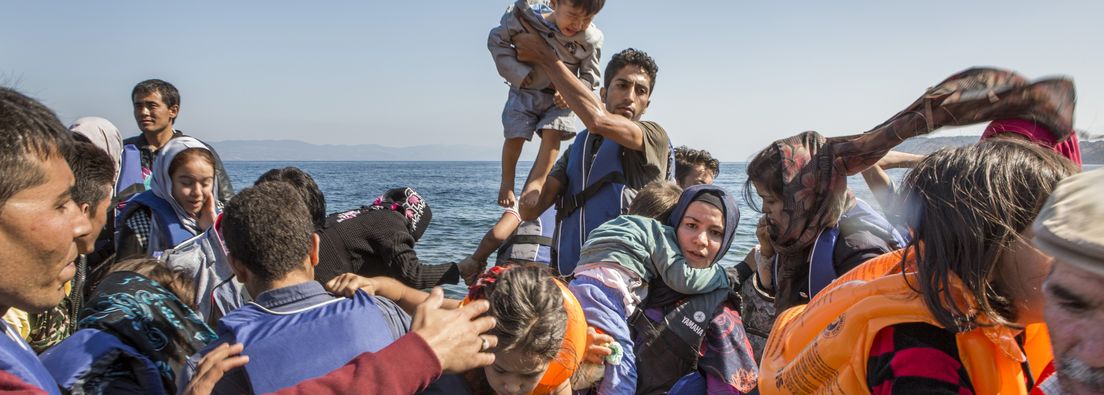According to the UN, the war has already claimed thousands of lives. Thousands more have been injured. About 7.7 million people have been internally displaced in Ukraine. According to the UNHCR, over 6.3 million refugees have fled Ukraine for neighbouring countries since the start of the Russian invasion. Poland is the first stop for over half of the refugees from Ukraine. More than 15.7 million people in Ukraine are in need of humanitarian aid.
Military attacks have damaged civilian infrastructure, including hospitals, schools, homes and water supply facilities, all along the line of contact in eastern Ukraine and in cities across the country. Many major cities are under constant bombardment.
Lack of security and access are hampering the rapid delivery of aid to the worst-affected war zones in Ukraine. Urgently needed emergency aid is reaching some but by no means all of the victims of the war. The civilian population is in urgent need of safe shelter, medical care, daily necessities and psychological support.
Humanitarian commitment
Since the start of the war, humanitarian workers and volunteers have been at the forefront of the humanitarian response, giving their all to help the affected population. We asked three members of the Swiss Humanitarian Aid Unit (SHA) to talk about the challenges they have faced in their deployments and to tell us what they are most proud of.
Michael Fichter Iff
Mission: head of operations in Lublin and deputy team leader in Lviv
What was your biggest challenge?
I had been on several missions to eastern Ukraine over the past few years and was therefore somewhat familiar with the area. When we left for Ukraine four days after the war started, we encountered a completely different situation and had many unanswered questions: How are the people on the ground doing? What are their needs? Where is the war headed? Which areas are going to be hit next? We had to constantly consider different possibilities. We were also one of the first teams on the ground. We had to clarify quite a few things, for example with the customs and border guard authorities. We were very fortunate to be able to count on the support of colleagues from the Swiss embassies in Warsaw and Kyiv. During our second mission and trips to Lviv, the focus was on the security situation.
What are you most proud of?
The entire team – the teamwork was fantastic despite the challenges. I'm of course also proud of what we accomplished: we quickly provided much-needed help and laid the foundation for the opening of a humanitarian office.
What experiences and images will you take from this mission?
There are so many... In the first days of the war, we saw large numbers of women and children on the Polish-Ukrainian border who had fled their country not knowing when, or if, they would ever see their loved ones again. I will also remember the solidarity of the volunteers in Poland and Ukraine who provided support for Ukrainian refugees. And certainly also the nightly air-raid sirens in Lviv and the knowledge that so many people, including children, had to endure them several times a day. And last, just the contrast between war and life, which must go on.
Sonia de la Cruz
Mission: secondment to cash transfer programme in Warsaw and Lviv
What was your biggest challenge?
In Warsaw: figuring out where I could provide the most value. And obtaining information and checking its accuracy. In Lviv: carrying on with life and work despite daily and nightly air-raid sirens.
What are you most proud of?
That my nexus-oriented inputs were appreciated by Caritas Switzerland and Caritas Ukraine. We will probably start a pilot project 'Cash for isolation' with Caritas Ukraine, the local partner of Caritas Switzerland, to provide winterised shelter and other support to help people through the winter months.
What did you take away from this experience?
Being seconded to an NGO and contributing to their work in the field is very thrilling and rewarding. It's a very hands-on experience. It was also remarkable to see how much an NGO with far fewer resources can achieve to consistently high professional standards.
Beat Herger
Mission: organising the evacuation of refugees from and food deliveries to Odesa and Vinnytsia
What was your biggest challenge?
Landing at Kyiv airport on a beautiful winter's day in mid-February and leaving Kyiv with the last Swiss convoy after three very intensive weeks at the Swiss embassy was probably my biggest challenge. Kyiv was encircled by the Russian aggressors at the time.
What are you most proud of?
Thanks to Ambassdor Manuel Bessler's quick decision, we were able to deliver urgently needed food supplies less than two weeks after the request for help came from Odesa and Vinnytsia. Extraordinary efforts by specialists from Swiss Humanitarian Aid at head office in Bern and the cooperation offices in Kyiv and Chisinau, supported by the rapid response team, made it possible to draw up all the required documents on time and begin delivering food supplies to both cities.
What did you take away from this experience?
The team spirit, personal dedication and technical competence of every member of the rapid response team was an extraordinarily positive experience. The cooperation between the different medical professionals of the 'Mother and Child' team (doctors, midwives, nurses), staff at head office in Bern and the cooperation offices in Chisinau and Kyiv and the SHA specialists was the most positive experience for me personally.
Further information on Switzerland's engagement in Ukraine: link
Switzerland is currently confronted with the largest movement of refugees since the Second World War: link
Compulsory education of refugee children and young people (de, fr, it): link
The UNHCR leads the international coordination of all refugees worldwide and in Ukraine: link
Global Trends is published annually to analyse changes in the populations served by the UNHCR and to increase public understanding of current crises: link
Citations collected in June 2022 by Christina Stucky, member of the SHA and the editorial team of The Humanitarian.


